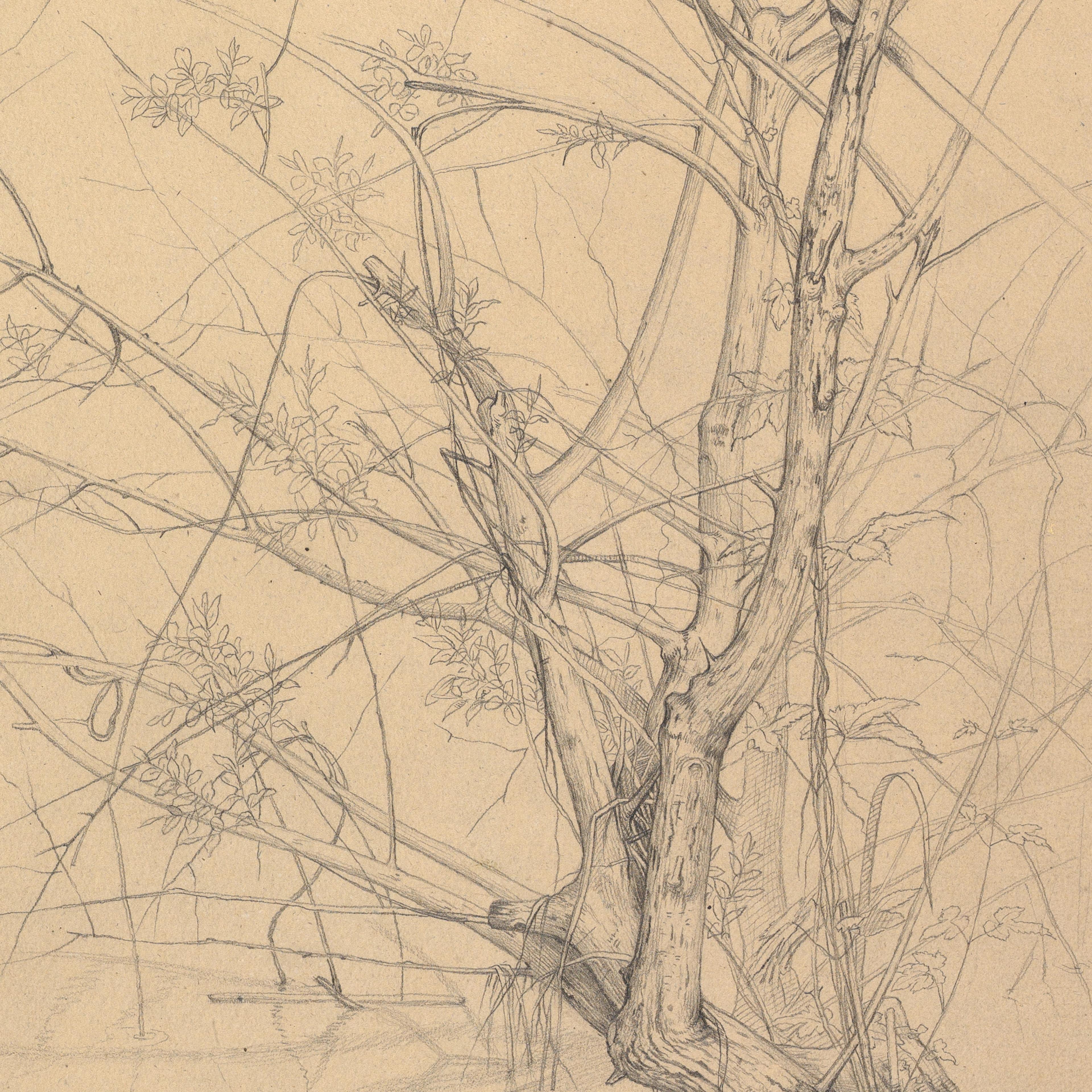The mineral graphite is a crystalline form of the element carbon, which occurs naturally in various types of rocks. Composed of disk-like particles that readily slide over one another, graphite easily produces marks on paper or vellum that often appear shiny when viewed in obliquely-angled or raking light. This surface quality helps to distinguish graphite drawings from works in black chalk. Graphite was used for drawing in Central Europe during the sixteenth century, but its use became more widespread in the late eighteenth century.

Clockwise from upper center: mineral graphite, range of modern pencils, variety of erasers, sharpener, knives, stumps, various types of porte-crayons (holders)
The purest graphite originated in the northern English valley of Borrowdale. Well suited for drawing, this soft, high-quality material was cut into sticks and either wrapped with twine for grasping between the fingers or placed in a porte-crayon, a tool designed to hold a small piece of chalk or charcoal. The mines at Borrowdale were eventually depleted, provoking a search for a substitute. By the by end of the eighteenth century, pencils (a word derived from the Latin peniculus for brush) would be fabricated from clay and low-quality graphite, based on the invention of Nicolas-Jacques Conté (1755–1805).
Today's pencils are remarkably similar to Conté's original recipe and design, in which the mixture is extruded into long rods (commonly referred to as "leads"), fired, and encased in wood sheaths.
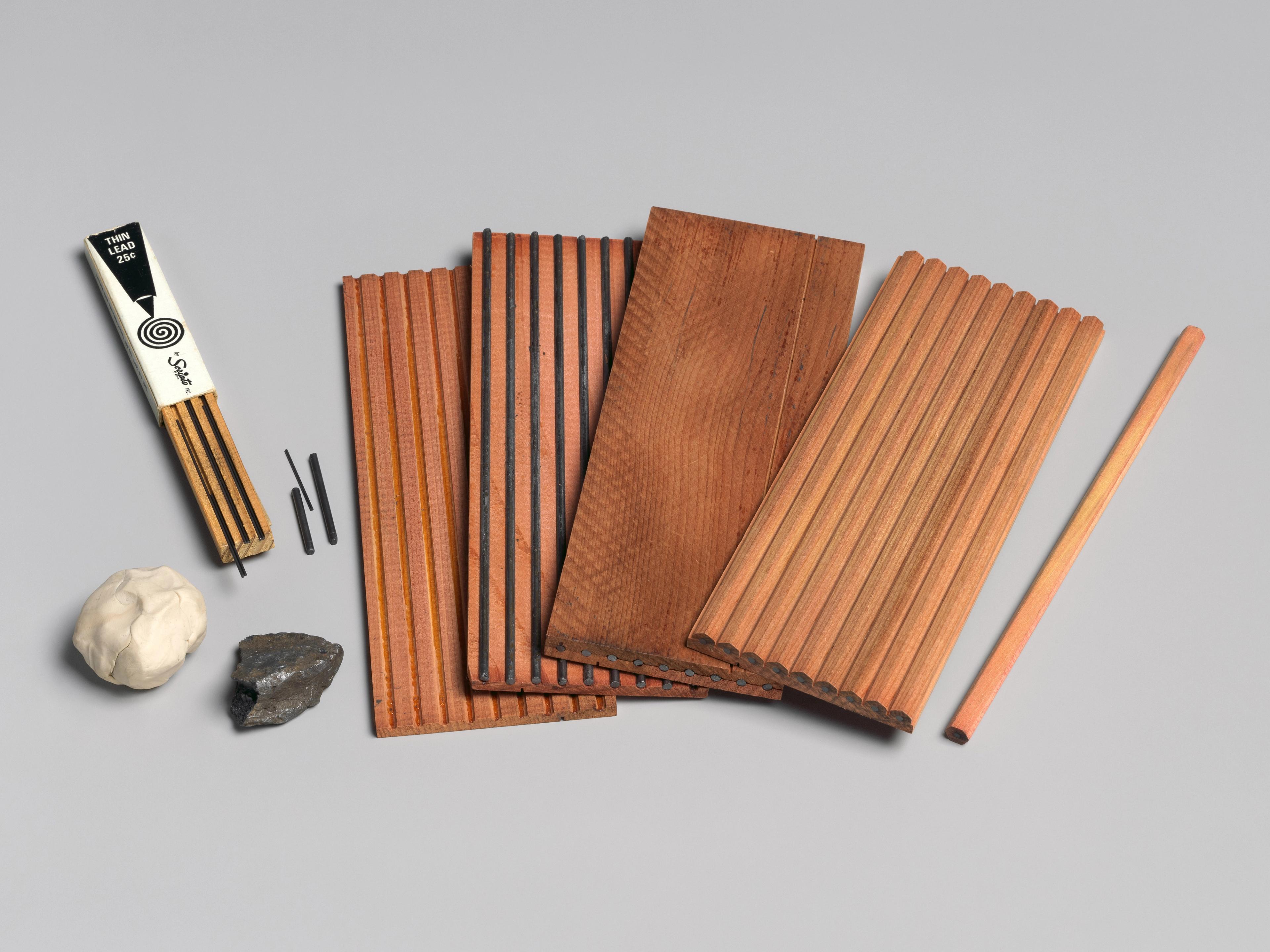
Adjusting the proportions of graphite and clay produces variations in both texture and depth of tone. A higher proportion of graphite produces harder, more silvery tones, whereas a greater amount of clay yields softer and blacker pencils. A pencil's hardness is indicated by a range of numbers and letters—"H" for hardness and "B" for blackness—with 9H producing the lightest strokes and 9B the darkest. The popular No. 2 pencil is of medium tone and is the equivalent of HB, commonly stamped on pencils today.
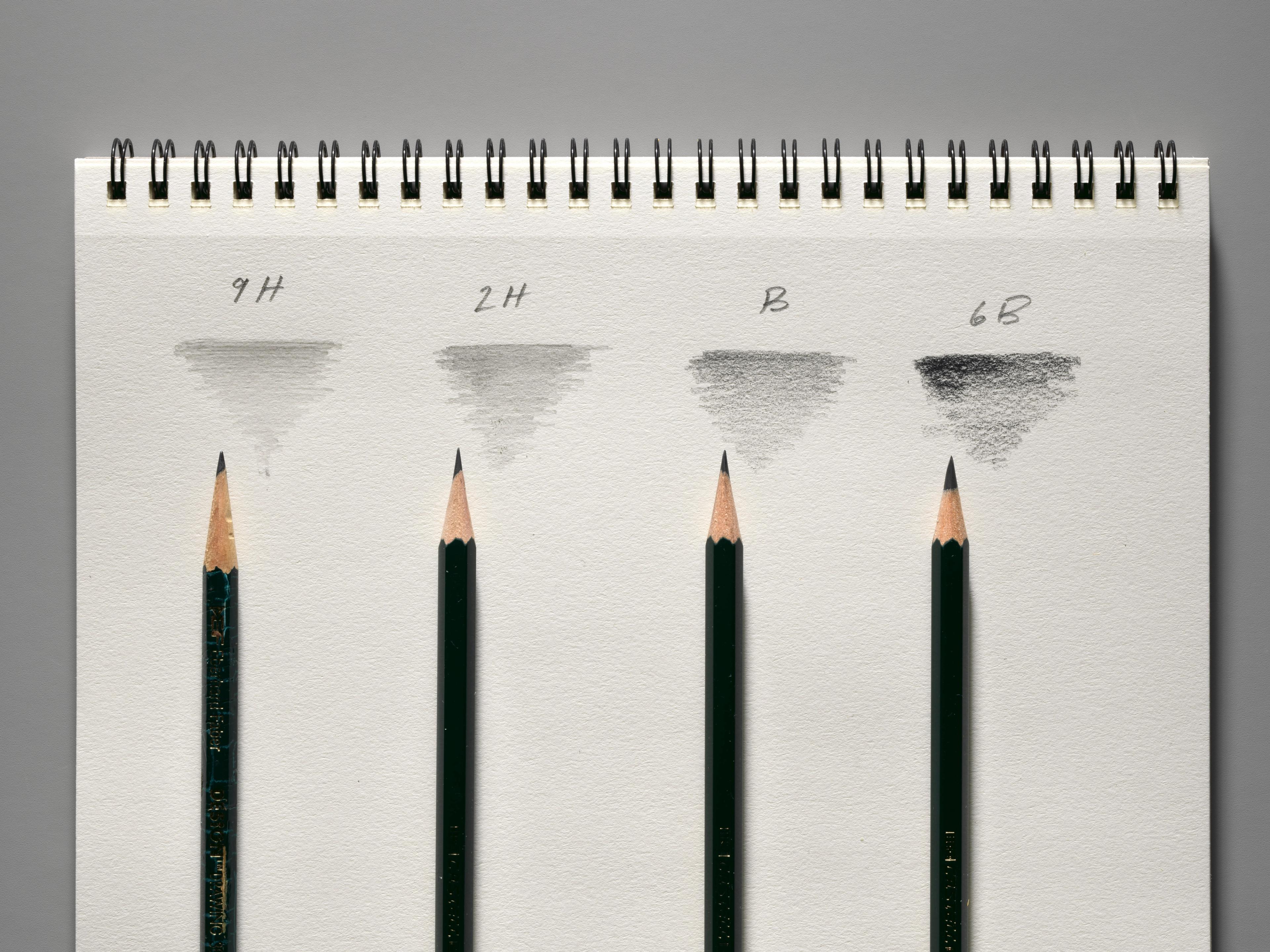
As with other media applied directly to paper without the intermediary of a brush (chalk, charcoal, pastel), graphite can produce a range of linear marks and varieties of tone. When sharpened to a point, it creates narrow, even strokes. Massing elongated hatches (parallel strokes) or cross-hatches (overlapping strokes in a different direction) creates tone.
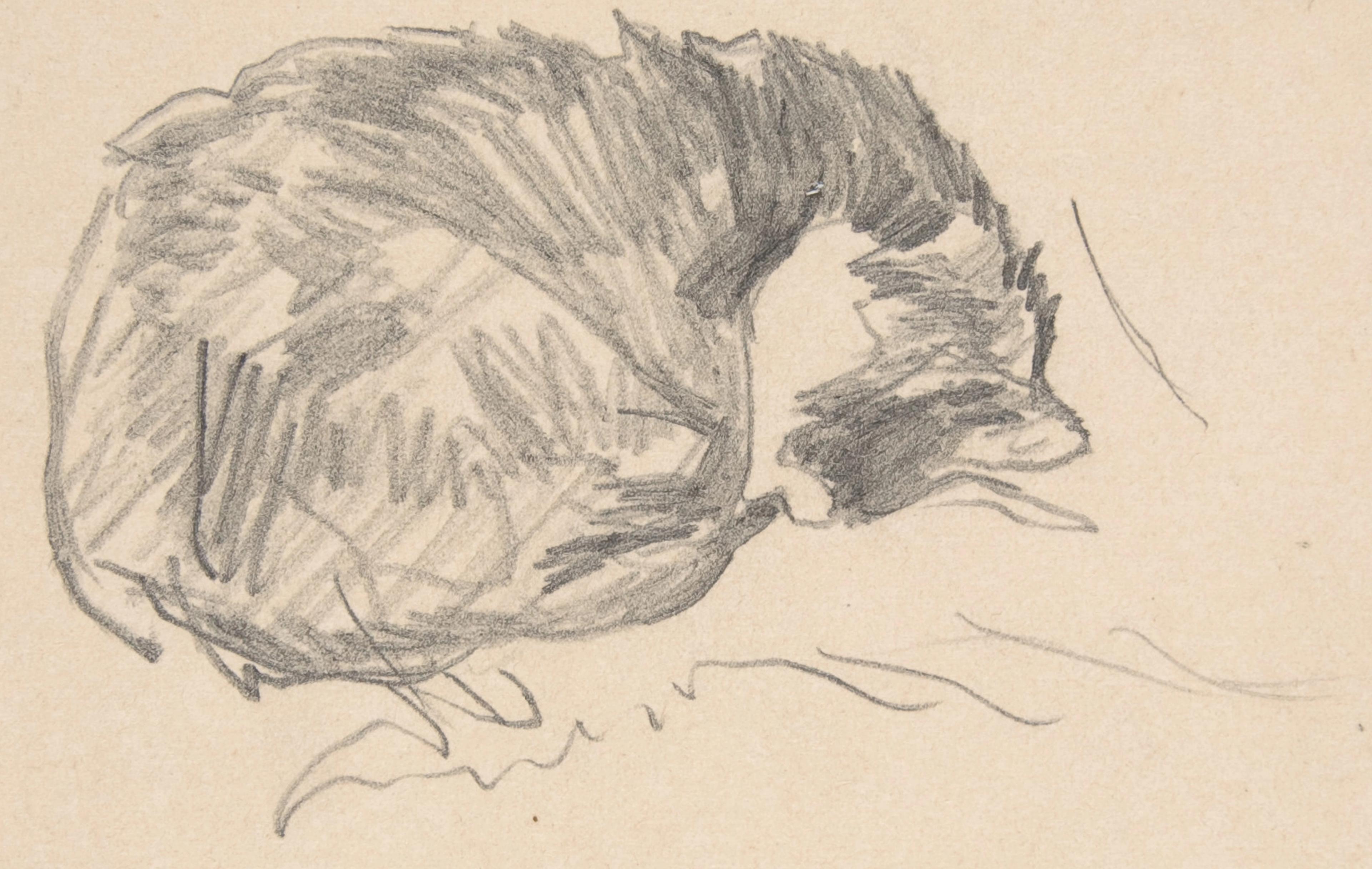
Edouard Manet (French, 1832-1883). A Cat Curled Up, Sleeping (detail), 1861. Graphite, on ivory-colored paper, 4 5/8 x 4 1/4 in. (11.7 x 10.8 cm). The Metropolitan Museum of Art, New York, Bequest of Clifford A. Furst, by exchange, 1995 (1995.493)
Artists can create areas of modulated tone by using the broader side of a soft pencil, or by blending with a finger or a stump (a coil of paper, cotton or other material).
Unlike many other media, graphite is easily removed from a drawing. For aesthetic reasons or corrections, it may be lifted from the surface of the support using scraping knives or different types of erasers. This allows artists to make changes or create highlights by revealing the bright underlying paper. Traditionally, small pieces of bread were used; today, rubber, vinyl, latex, and gummed erasers are among the many tools commonly employed.
The diverse qualities of graphite provide artists with many creative possibilities. The thin, refined strokes produced by harder, denser sharpened graphite appealed to a neoclassical portraitist such as Jean Auguste Dominique Ingres. Softer grades allow for broader, dark strokes, which are suited to shadowy areas, or for quickly sketched landscapes, as in the work of Thomas Gainsborough.
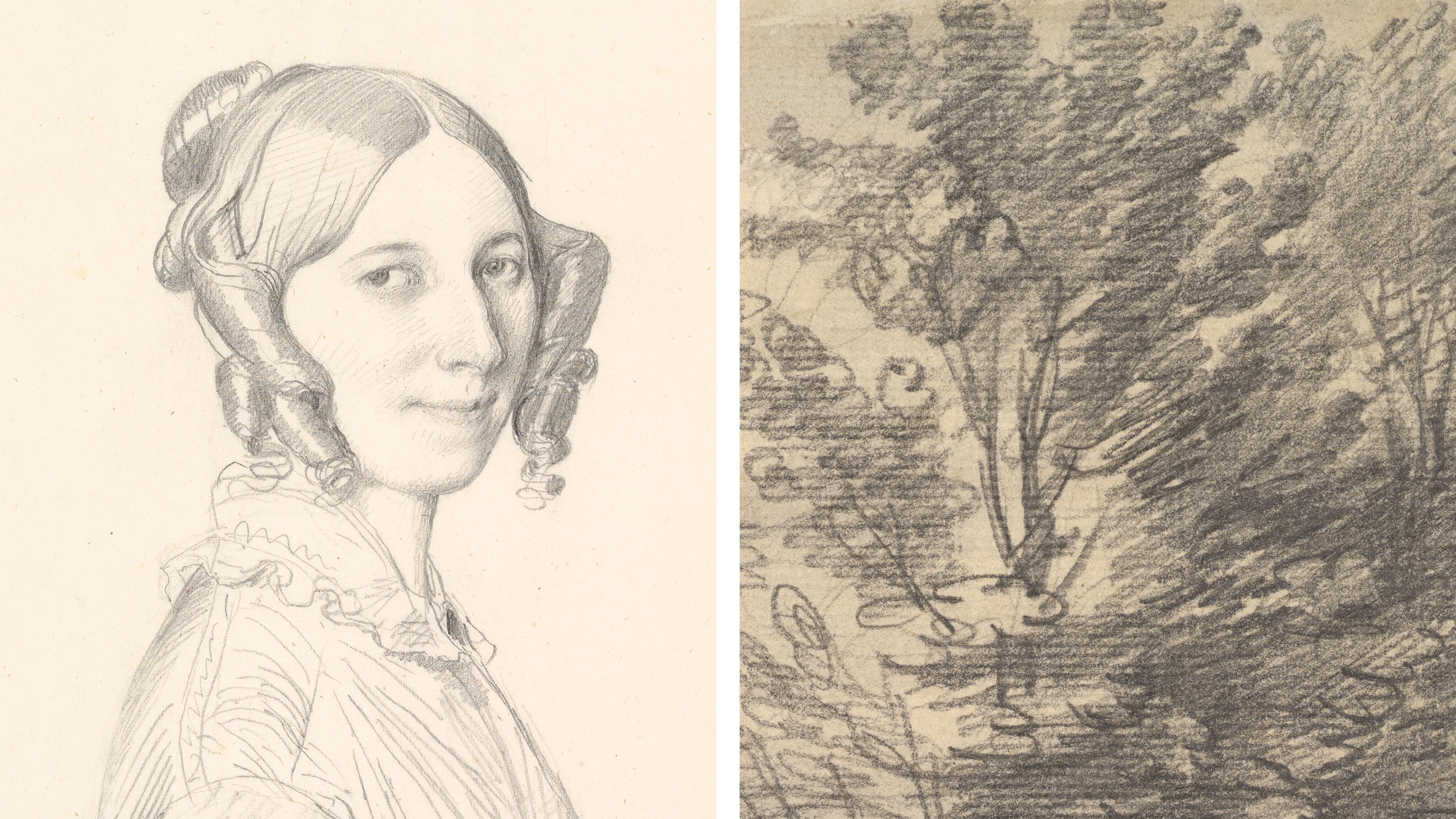
Left: Jean Auguste Dominique Ingres (French, 1780–1867). Madame Armand Bertin, née Marie-Anne-Cécile Dollfuss (detail), 1843. Graphite on wove paper, 13 1/2 x 10 1/4 in. (34.2 x 26 cm). The Metropolitan Museum of Art, New York, Gift of Mrs. Charles Wrightsman, 2012 (2012.150.14) | Right: Thomas Gainsborough (British, 1727–1788). A Clump of Trees (detail), ca. 1757. Graphite, brush and gray wash, 6 1/4 x 7 5/8 in. (15.8 x 19.4 cm). The Metropolitan Museum of Art, New York, Purchase, Brooke Russell Astor Bequest, 2013 (2013.100)
Linear, tonal, and reductive techniques can be combined to great expressive effect, as evident in the drawing of Auguste Rodin below, where lighter tones were created by lifting the medium with a soft eraser.
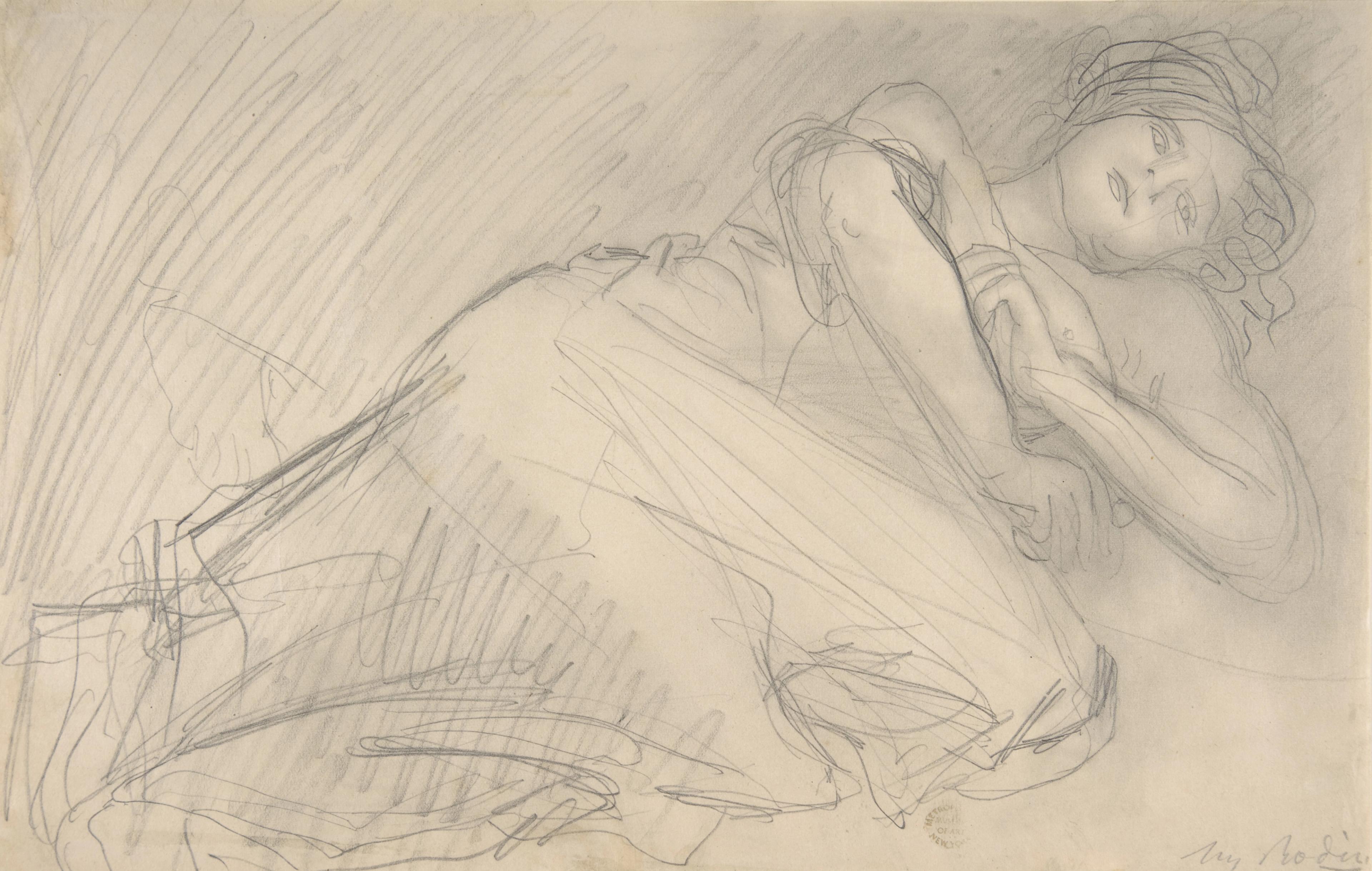
Auguste Rodin (French, 1840–1917). The Abandoned, 1898–1907. Graphite, 7 5/8 x 11 7/8 in. (19.4 x 30.4 cm). The Metropolitan Museum of Art, New York, Rogers Fund, 1910 (10.45.20)
See a selection of graphite drawings in The Met collection.
